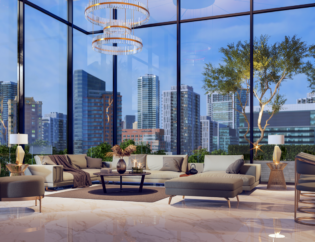
In recent years, innovative glass technologies have revolutionized the field of architecture, enabling architects and designers to push the boundaries of creativity while enhancing building performance. From energy efficiency to aesthetics, these advancements are reshaping the way we think about and utilize glass in modern architecture. This article explores some of the most exciting glass technologies that are transforming contemporary design.
Smart Glass
Smart glass, also known as switchable glass, is a groundbreaking technology that can change its properties based on environmental conditions or user preferences. This type of glass can switch from transparent to opaque, allowing for privacy on demand while maintaining natural light. Smart glass can also help regulate indoor temperatures by reducing heat gain from sunlight, ultimately leading to lower energy consumption. This technology is especially beneficial in commercial buildings, where privacy and energy efficiency are paramount.
Energy-Efficient Glazing
Energy-efficient glazing systems are designed to minimize heat transfer, reducing the need for heating and cooling systems. Low-emissivity (Low-E) glass is a popular choice that reflects infrared light while allowing visible light to pass through. This feature helps keep interiors warmer in winter and cooler in summer, resulting in significant energy savings. By incorporating energy-efficient glazing into their designs, architects can create buildings that are not only sustainable but also comfortable for occupants.
Self-Cleaning Glass
Self-cleaning glass is coated with a special layer that breaks down organic dirt and debris when exposed to sunlight. This technology makes maintenance significantly easier for building owners, as rainwater can wash away the loosened dirt, leaving the glass cleaner for longer periods. This is particularly useful for high-rise buildings and hard-to-reach areas where cleaning can be costly and challenging. By using self-cleaning glass, architects can design sleek, modern facades that require less upkeep.
Acoustic Glass
As urban environments become busier and noisier, the demand for noise reduction in buildings has increased. Acoustic glass is engineered to minimize sound transmission, making it an ideal choice for residential and commercial projects in noisy locations. By incorporating acoustic glass into their designs, architects can create serene interiors that promote productivity and well-being, even in bustling urban settings.
Printed Glass
Printed glass technology allows for custom designs, patterns, and images to be integrated directly into the glass surface. This capability opens up endless possibilities for artistic expression in architectural design, enabling architects to create unique and visually stunning facades or interior elements. Whether it's branding for commercial spaces or artistic installations for public buildings, printed glass can add a distinct touch to any project.
Conclusion
Innovative glass technologies are not just trends; they represent the future of architecture. By embracing these advancements, architects can create spaces that are not only aesthetically pleasing but also energy-efficient, sustainable, and functional. As technology continues to evolve, we can expect to see even more exciting developments in glass applications, making it an indispensable element in modern architectural design.
If you're looking to incorporate innovative glass solutions into your next architectural project, contact us at Vakefi Glass.
Our team of experts is here to help you choose the right glass technologies to enhance your designs and meet your project requirements

